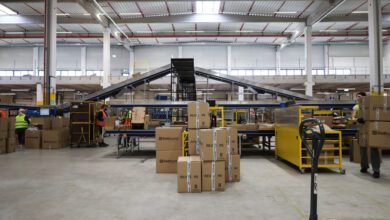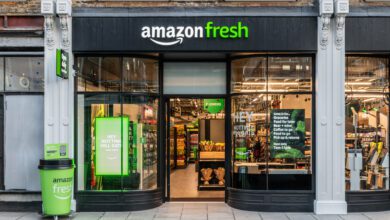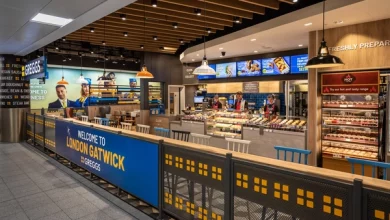‘Time over cost’; the new strategy for customer returns
Stuart Greenfield, Sales Director at Advanced Supply Chain, explains why retailers are rethinking supply chain strategies for processing customer returns.

Cost-first decisions have long dominated reverse logistics. Retailers have grappled with whether to charge online shoppers for sending items back and have prioritised cost cutting in supply chains to mitigate the financial impact of returns on margins.
Undoubtedly, cost remains an important factor in reverse logistics, but it’s starting to take second place to the timeliness and speed of returns processing. We’re finding that fast returns are becoming a boardroom priority for retailers. There are three key reasons for this, including optimum selling prices, re-shopping and brand loyalty.
Optimising sales
Retailers want to tackle the ‘returns void’ – the time that stock is tied-up in reverse logistics. The growing volume and frequency of customer returns can easily mean that stock worth tens or hundreds of thousands of pounds dwells in supply chains. Returned products spend too long in processing, when they should be readily available for purchase. This can prove damaging for retailers in terms of missed sales opportunities, which can have an immediate impact in terms of lost revenue, as well as a longer-term impact. ‘Out of stock’ scenarios can affect the stickiness of shoppers and their propensity to revisit websites. It can quickly drive them to competitors’ ecommerce sites.
Another concern about the ‘returns void’ is asset depreciation. The time that stock spends in the returns process erodes the opportunity to sell goods at Optimum Selling Prices (OSPs). This is particularly risky for seasonal lines, where there’s shorter windows to sell goods at their OSPs, and when consumer demand can quickly shift to the next trend. Achieving OSPs can often prove a more effective strategy for protecting margins, rather than cost cutting in supply chains.
Encouraging re-shopping
Retailers are increasingly keen to ensure that a returned item does not mark the end of a shopper’s purchasing journey. Consumers are refunded after a return, and businesses know there’s a strong opportunity for that money to be spent again. This is why there’s a growing focus on the timeliness and speed of returns processing. Quick refunds are becoming something of a silver bullet for returns. If shoppers get their money back quickly, they are more likely to re-spend with the same retailer. Re-shopping helps to address the overall profitability of returns processing.
ASC research of 2,000 consumers has shown that around 7-in-10 shoppers are more likely to re-shop with the same retailer if they receive a speedy refund. To achieve this, retailers need connectivity and accurate data throughout reverse logistics, which enables fast, consistent and diligent quality control of returned products. This creates the ability to appropriately and quickly issue a refund.
Building brand loyalty
Consumers want to have the freedom of trying products to see if they meet their expectations. They also want to have the confidence to know they can physically check that an item matches how it has been described online. If an online order, genuinely, isn’t right for a customer, shoppers expect to be able to send it back. Making this quick and easy can prove effective in building brand loyalty.
Slow and clunky returns processes frustrate shoppers. Not only will they be less inclined to spend again with the same retailer, but they are also likely to vent their dissatisfaction online. Social media and review sites can become quickly filled with negative experiences and opinions, creating a damaging digital footprint for retailers.
Improving transparency throughout reverse logistics can enable retailers to better manage consumer expectations. Shoppers can be kept up to date about the status of their returned item and issued with a timely refund to avoid frustration and dissatisfaction.
Quicker returns processing is becoming the number one priority for reverse logistics. Forward-thinking retailers are increasingly realising that this can deliver greater, long-term benefits for margins than a cost-first approach to returns.
For more information about how to optimise the speed of returns, contact ASC. Email: enquiries@advancedsupplychain.







